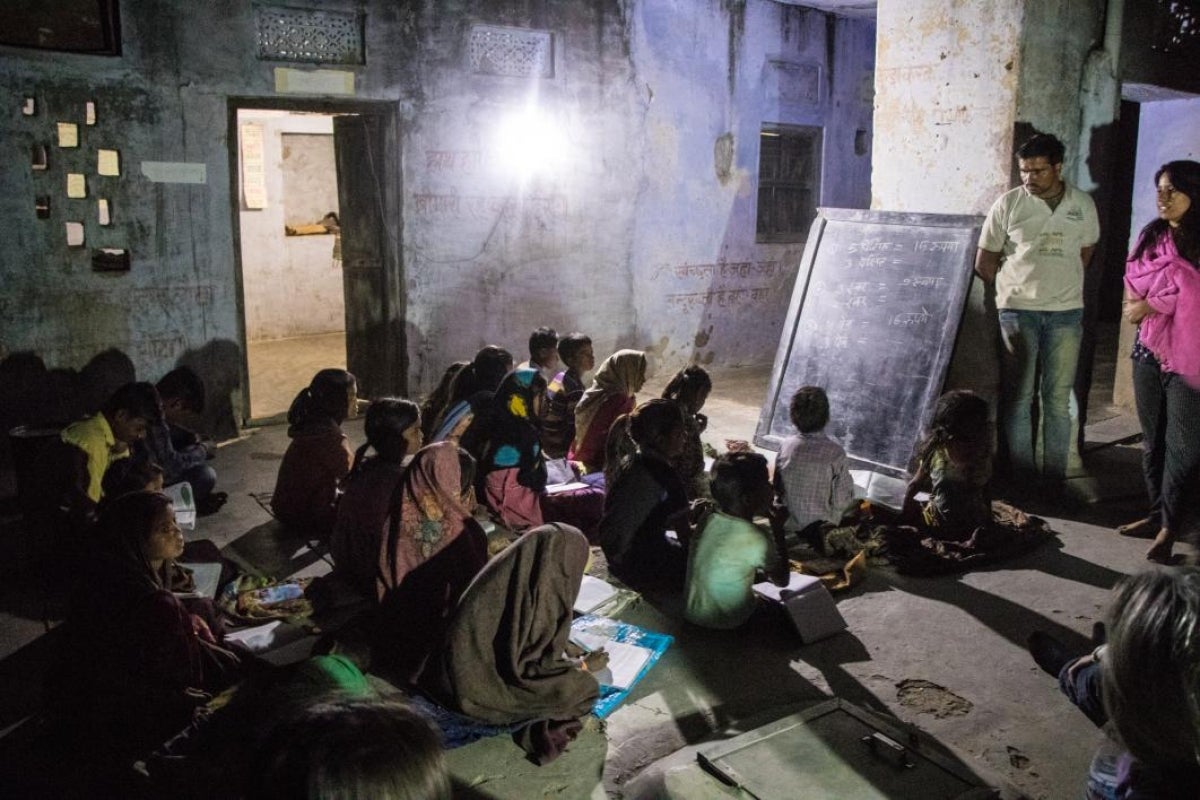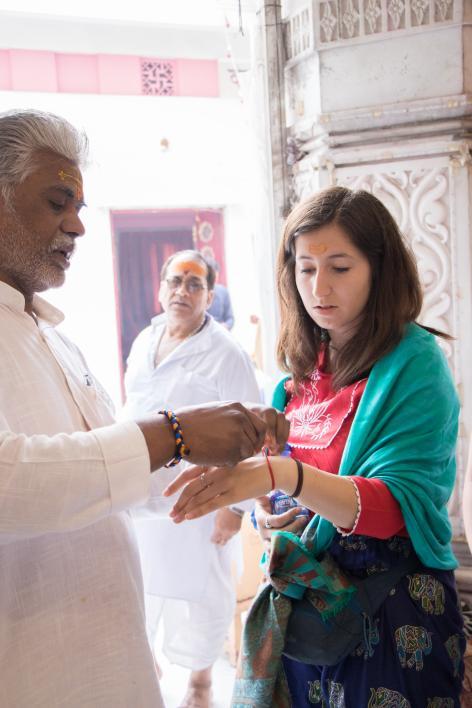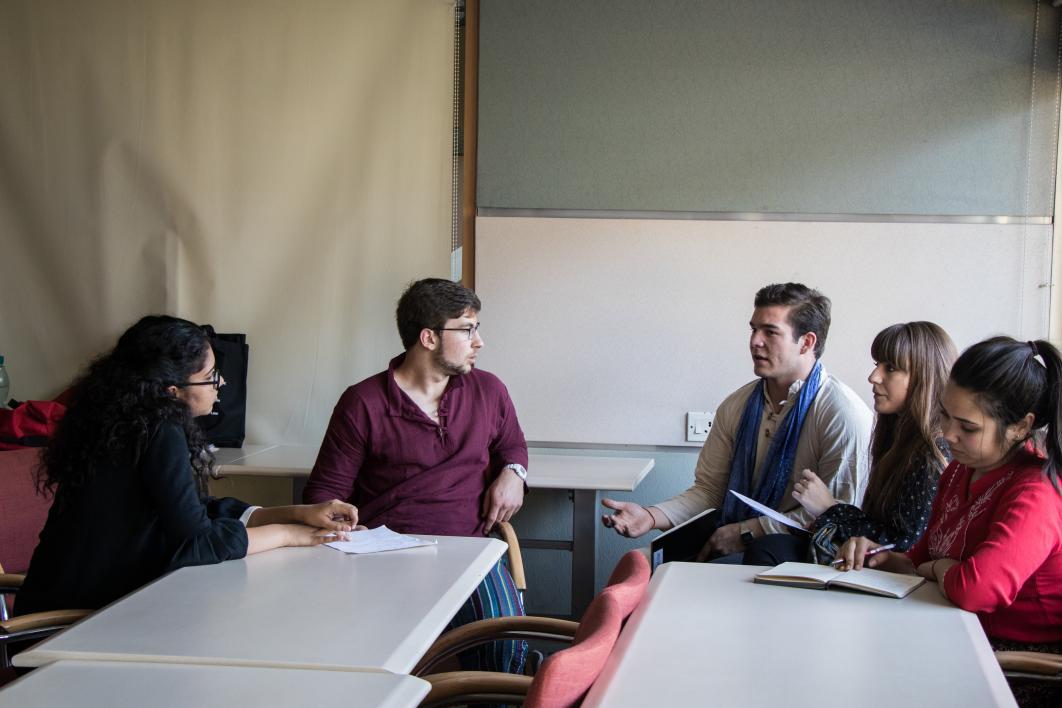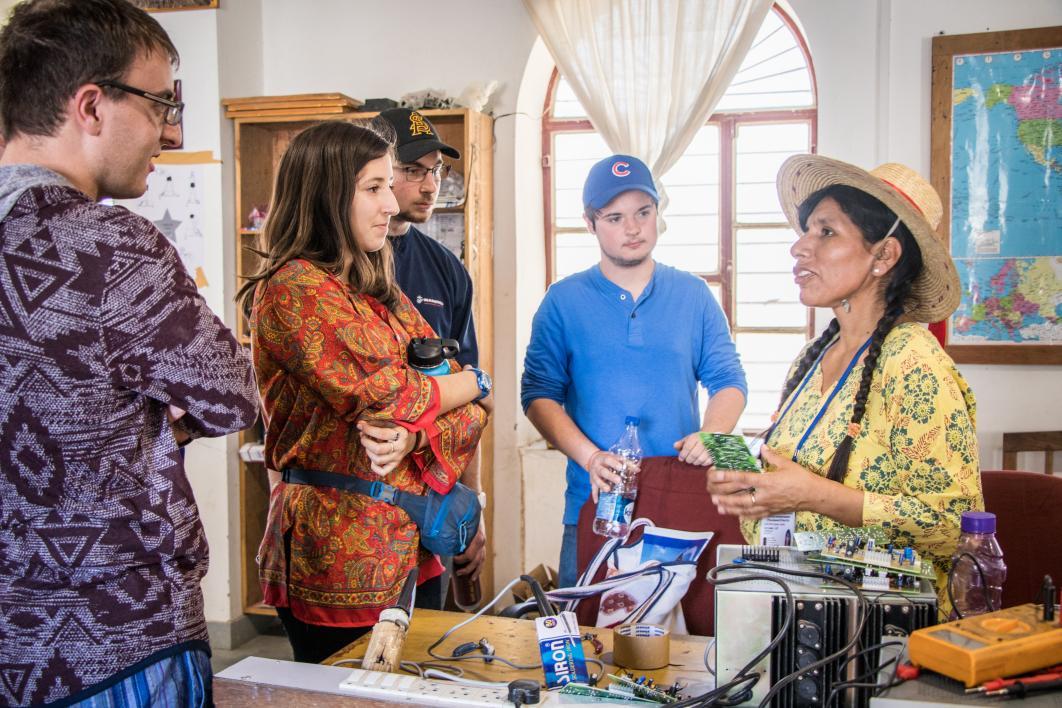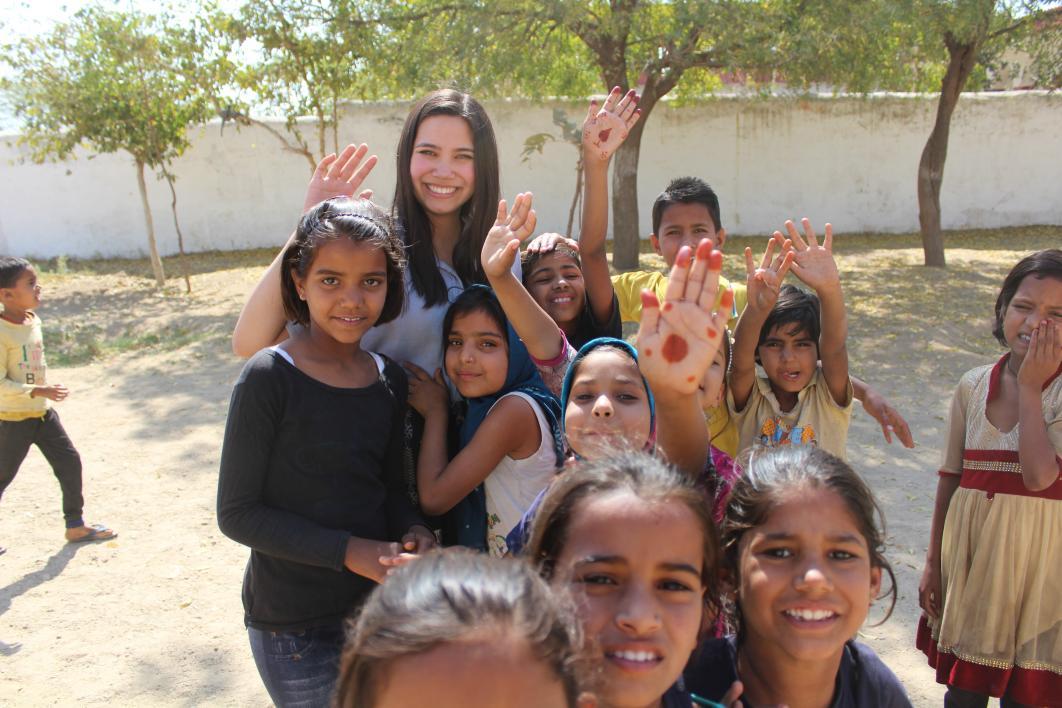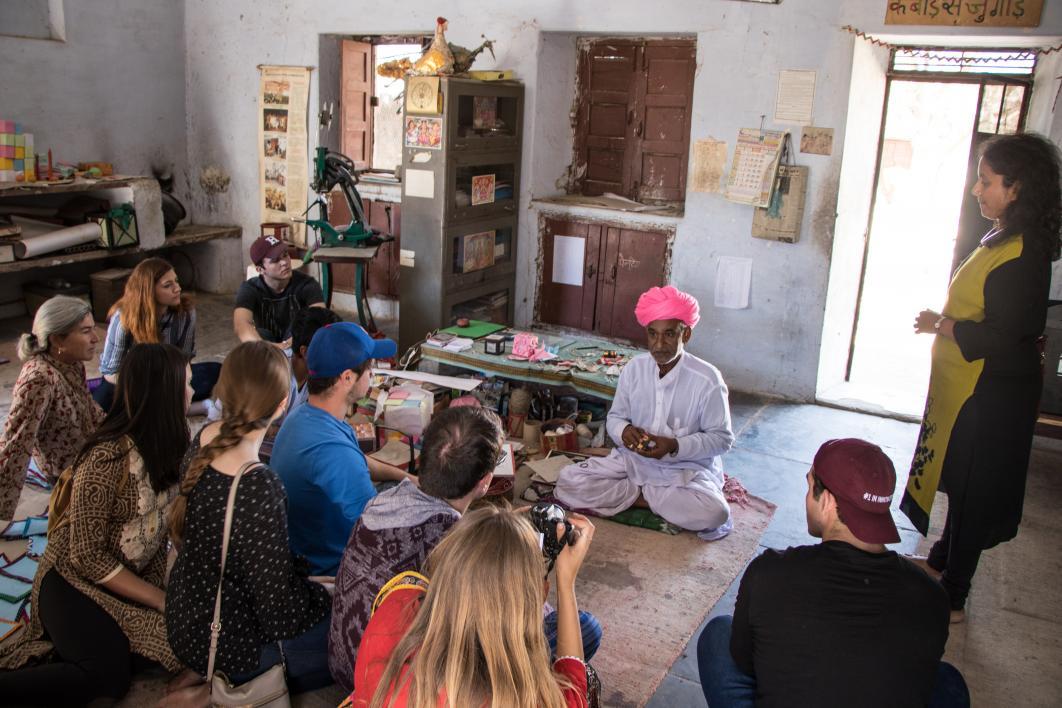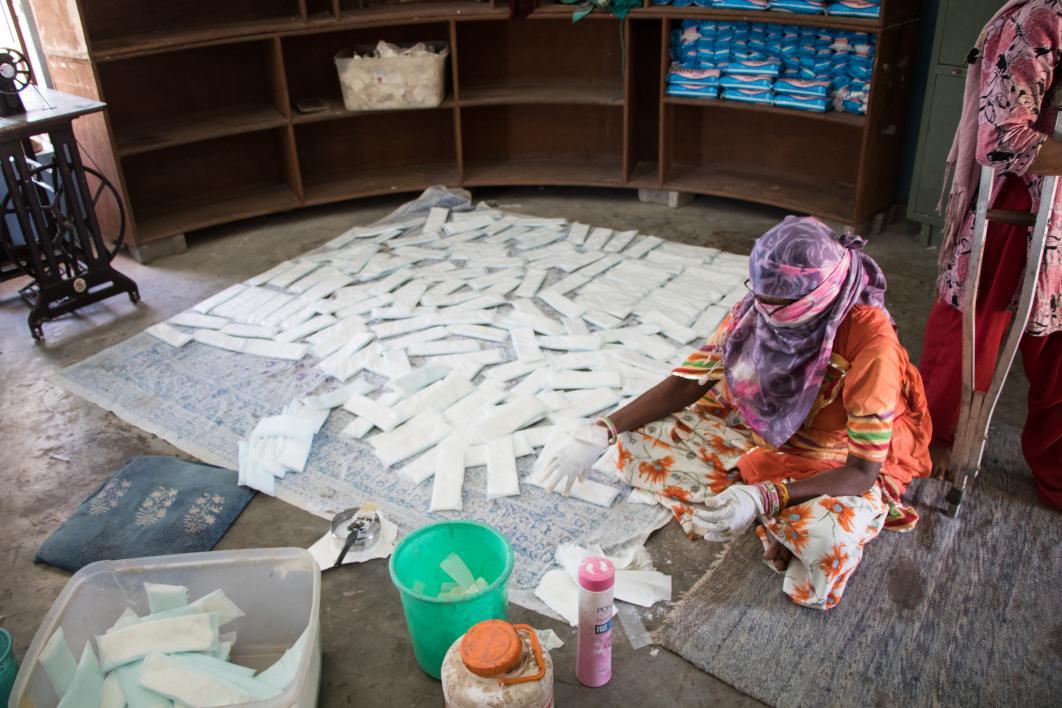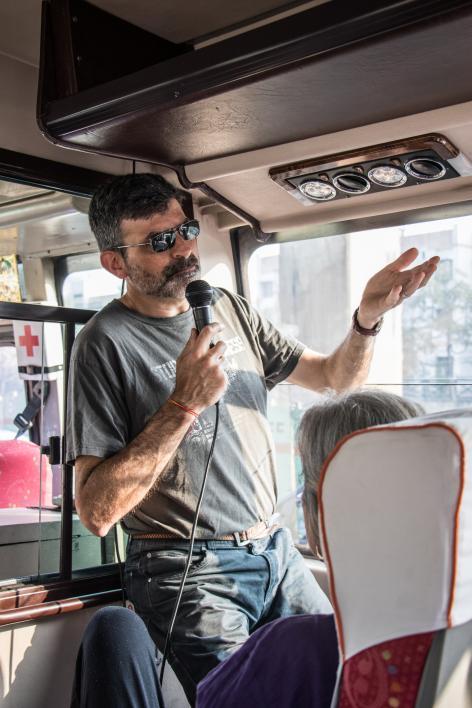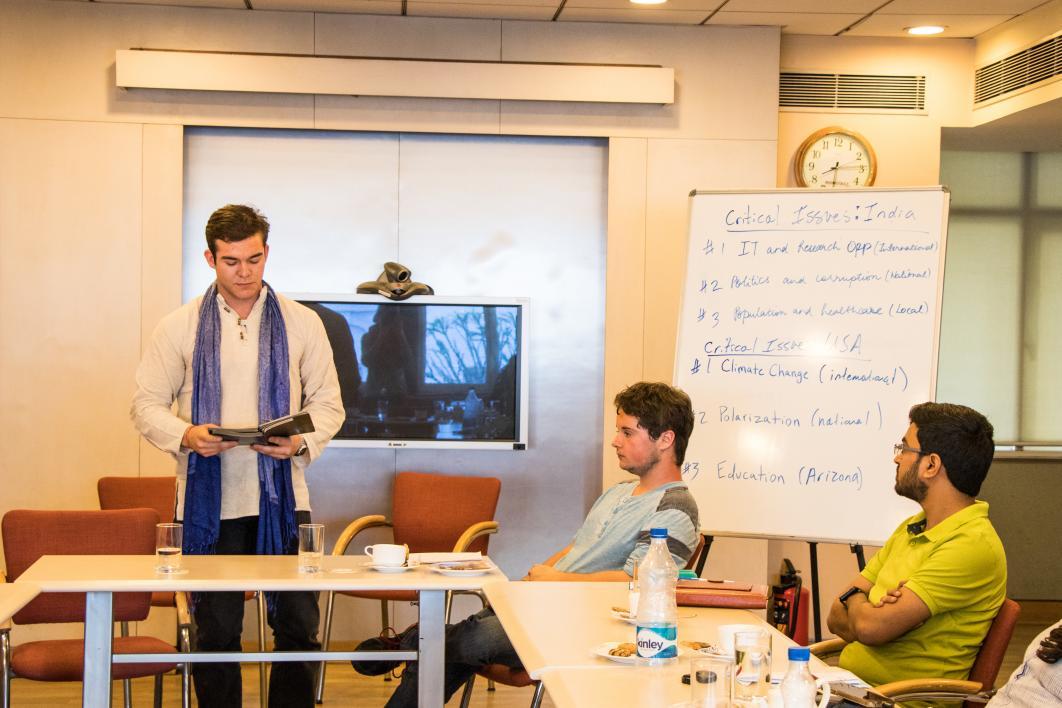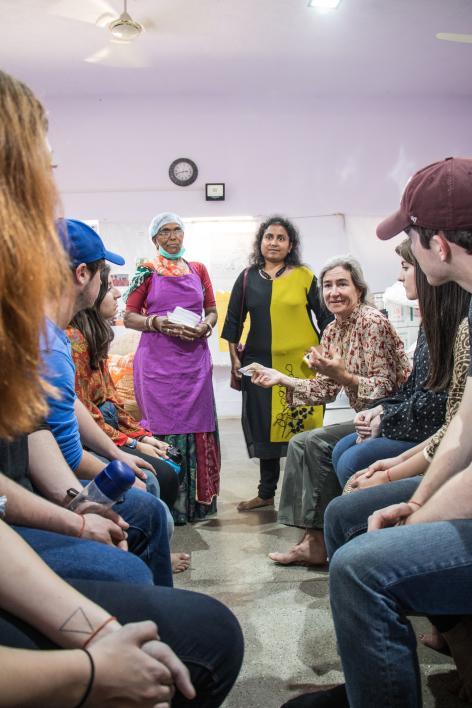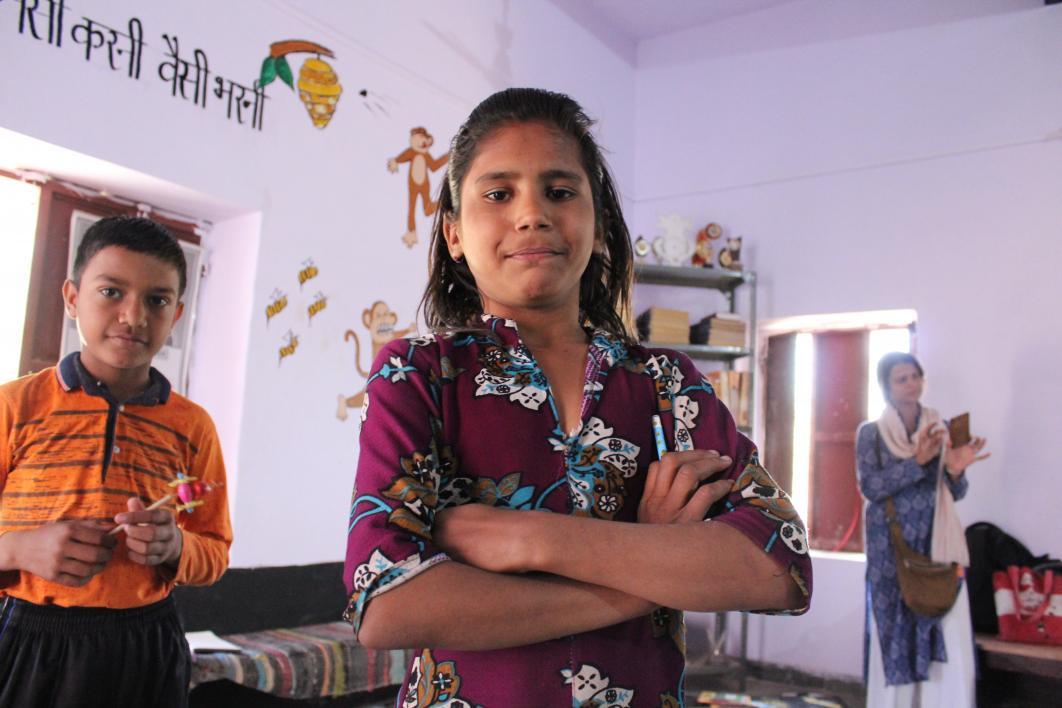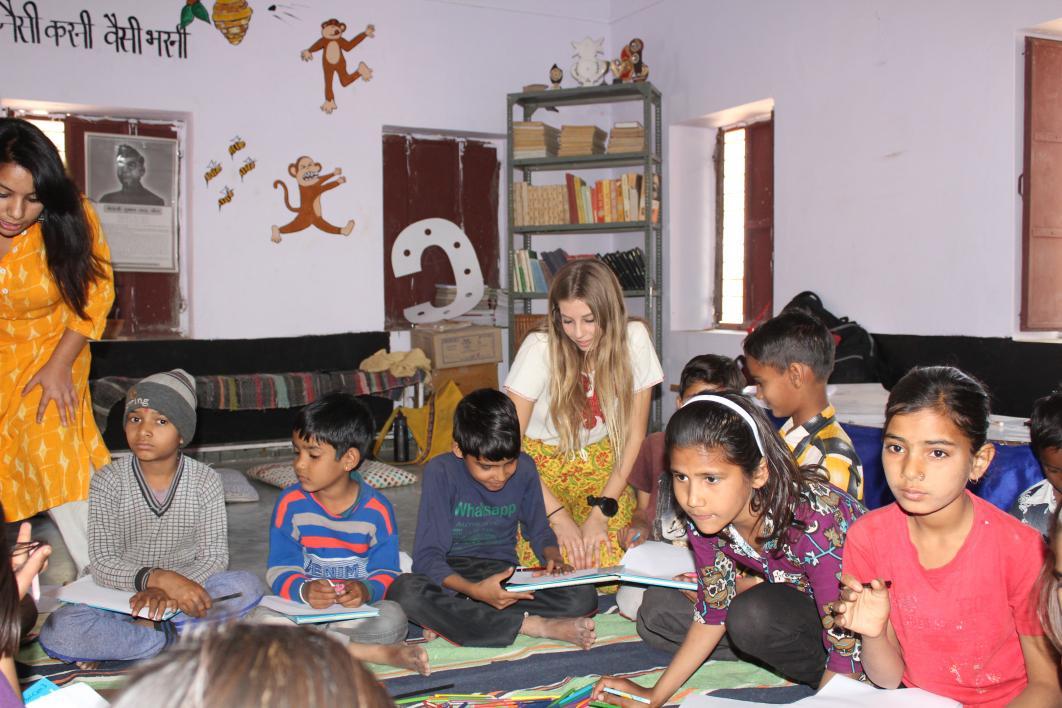ASU students travel to India for lessons in service, leadership

Arizona State University School of Civic and Economic Thought and Leadership went to India over spring break for the Global Intensive Experience.
For a lot of students, spring break is a time to recharge and enjoy the benefits of a few carefree days before the storm surge of year-end deadlines hits.
For 12 accomplished students from the School of Civic and Economic Thought and Leadership, this was not your typical spring break.
When these students signed up for an immersive service and leadership experience in India, they exchanged beaches, parties, visits home and camping trips for arduous travel to bewildering urban centers and dusty villages, where they would work hard and learn from entrepreneurs, teachers, journalists and nonprofit workers about what it takes to be a leader in the world's largest liberal democracy.
The Global Intensive Experience, sponsored by the School of Civic and Economic Thought and Leadership and led by cultural anthropologist Susan Carrese and political scientist Paul Carrese, exposed ASU students to some of the diverse facets of modern India — from densely populated, technologically advanced cities to the most rural, amenity-poor villages.
Each day, from 7 a.m. to 10 p.m., the students took on new intellectual challenges, and in some cases, confronted personal stereotypes and false assumptions while serving communities with completely unfamiliar cultures and value systems.
When the school proposed this leadership-service trip to ASU’s Study Abroad Office they listed several major themes that students would explore in their Global Intensive Experience in India:
• Cross-civilizational issues of leadership and liberal-democratic politics in a predominantly Hindu and Muslim culture
• The power of globalization
• America’s growing partnership with India as a world power in a prominent but difficult region
• Journalism and a free press in India
• Market economics in a formerly social-democratic or “third way” economy
• India’s vast socio-economic diversity
• The challenge of service and service-learning in a completely different cultural context
To address these complex issues in a short period of time, Susan Carrese curated a syllabus of lectures, interviews, service activities and cultural experiences that offered students the opportunity to engage, not as cultural tourists, but as researchers, collaborators and volunteers.
A cultural tour
The students began their service trip with a visit to Humayun’s Tomb, a great mausoleum of the Mughal dynasty that would later influence the Taj Mahal. Humayun’s Tomb is a UNESCO world heritage site and an important touchstone to understanding the complex interactions of Hindu and Muslim culture in contemporary India.
During a guided walk through the former center of the Muslim imperial city of Shahjahanabad — now part of the national capital city of New Delhi — they visited India’s largest mosque and participated in a pujaworship ceremony at a Hindu temple.
Students say they were struck by the religious diversity they witnessed.
“While the group was walking down the streets of Old Delhi, we witnessed Jain, Hindu, Sikh and Islamic places of worships all on the same street,” said Ivan Bascon, a junior majoring in molecular biosciences and biotechnology. “Although the relationships between the religious communities are not perfect, I saw a far better form of respect and understanding between religions than in the United States.”
Kira Olsen-Medina, a junior studying sociology, said, “It’s one thing reading about religious conflict and seeing it on the news in distant places, but seeing firsthand the dominant role of religion in another culture was significantly impactful.”
Later, at a visit to the Fulbright House — which administers the Fulbright-Nehru fellowships for educational exchanges between India and the United States — they learned about international scholarship opportunities and talked with Prasad V. Kunduri, a senior editor of The Tribune newspaper, northern India’s largest circulating daily newspaper.
“Speaking with Prasad Kunduri about the state of the news media in India was fascinating,” said Rebecca Spiess, a student of the Walter Cronkite School of Journalism and Mass Communication. “While the numbers of English newspaper consumption have plateaued, other dailies aren’t losing readers across India. I think it will be incredibly interesting to see whether, as the prevalence of smartphones rises, newspapers in India will take a different approach than we’ve taken in the U.S. to make sure revenues stay steady.”
The School of Civic and Economic Thought and Leadership cohort also met with Indian university students for an exercise in which the students identified together the issues that mattered to them on local, national and international levels. They then worked toward collaborative, cross-cultural solutions, and exchanged ideas about education reform, democratic participation and the "brain drain" that leads educated students in India to leave smaller villages in pursuit of careers in larger, more prosperous cities.
Other activities included a Q&A session about transportation, globalization and business leadership with the CEO of a major Indian freight company, an impromptu cooking lesson, and a walking tour through the markets and old city of Jaipur, not far from the Pakistan border.
Making a difference
As the students complete their post-Global Intensive Experience written assignments, an overwhelming majority say that among the many activities on their journey, the service project and the residential experience at Barefoot College, in the state of Rajasthan, was the most memorable.
Barefoot College is a volunteer organization founded in 1986, committed to giving poor, rural communities the tools they need to independently thrive. Inspired by the principles of India’s independence and civil rights leader Mahatma Gandhi, the Barefoot ethos elevates the values of service and citizenship over financial wealth. The college rejects certifications and university degrees, claiming that students who attend Barefoot are certified by the communities they serve.
The mission of Barefoot College is to promote self-sustaining communities. They do so by training older students (often grandmothers) to produce solar energy and clean drinking water technology to take back to their communities.
The Global Intensive Experience cohort met with the Solar Mamasthe school's village-matriarchs-turned-solar-engineers, and learned how — since the program's inception — they have brought solar lighting, cookers, heaters and water desalination systems to over 18,000 households in 83 countries.
“I was absolutely blown away when I saw the education and work that the Solar Mamas were undertaking in the workshop with electrical wiring and solar panels,” Bascon said. “Inviting these older women from all over the world really speaks volumes about the idea of being a global citizen and serving communities all over the world by educating and creating future leaders and community change makers.”
A unique education
While the training at Barefoot gives students technical skills, the backbone of the multi-faceted approach is civic education.
Through a network of “night schools,” about 75,000 children, most of whom work during the day taking care of farm animals or their siblings, are able to learn everything from mathematics and reading to how to care for their sheep or what to do if they get arrested.
Among the top priorities of the night schools is teaching the children about democracy and citizenship, even going so far as to elect a 12-year-old “prime minister” and “government cabinet” that monitors and supervises 150 schools.
Sophomore political science major Alexis Kwan noted that India has an astounding 66 percent voter turnout, and it is likely this kind of early civic engagement by Indian youth that leads to a lifetime of democratic participation.
ASU students were lucky to attend a session of the night school — after a long and bumpy ride on dirt roads. During that session, freshman philosophy major Max Fees also delighted the Indian students by leading them in interactive songs.
Because a majority of Barefoot students are illiterate and often don't speak the same language as their peers or teachers, lessons are routinely taught through sign language, art and puppetry.
School of Civic and Economic Thought and Leadership students led activities ranging from painting a mural to illustrate the medicinal benefits of plants to coordinating educational games that teach children about gender stereotypes and how to identify and expose sexual abuse.
In spite of language barriers, the ASU students felt like they made connections with the night-school students.
“By the end of the day, the kids were teaching us phrases in their language, calling us ‘sister’ or ‘friend,’ and walking back with us to the new campus,” Kwan said.
The Barefoot night school visit was arranged by Shuvajit Payne, Barefoot director of education who left London and a successful consulting career with IBM to return to India and work on developing sustainable rural communities.
Justin Heywood, a sophomore political science major, said that he learned something about servant-leadership from Payne.
"He had a great job working in the U.K., but was willing to leave it all behind after witnessing he could make a difference in India," Heywood said. "He could have ignored the problems that he saw, but he decided to act. His decision led to him living a less lavish lifestyle relative to the U.K. However, it was my perception that he does not regret his decision and is happier as a result. He is dedicated to his job and truly seeks opportunities for his communities."
Given limited tools, compromised communication and last-minute changes to lesson plans, the Global Intensive Experience students learned to be flexible and find solutions and compromises at Barefoot.
“Barefoot College really taught me a lot about working with the resources you have, being creative and innovative” Olsen-Medina said. “Working together, we realized that sometimes a leader’s responsibility is to recognize individual strengths and direct those energies into one cohesive mission.”
Reflecting on the experience
Before leaving India and a dizzying series of activities, the students visited the Taj Mahal, arguably the most significant cultural site in all of India. But the grandeur of the mausoleum, another UNESCO World Heritage Site, is not without its price, as Olivia Gonzales, a junior majoring in global health, remarked.
“One of my main takeaways from class has been that the most successful empires understand the importance of balance and moderation," Gonzales said. “They use their power with purpose, not just for the sake of exercising it. Seeing the Taj Mahal and hearing about the life of Shah Jahan really stuck out to me as the dangers of losing sight of moderation.”
As the students submit reflections on their experience in India, their comments testify to the value of studying abroad, and the life-changing impact that traveling with purpose can have on those who are ambitious enough to participate.
“Diving deeper into the sociopolitical and historical aspects of India gave me a much more detailed understanding of this country than I had from my other short travels," Gonzales said. "More than that, however, our trip reaffirmed my love of service abroad. From now on when I travel, I want to be sure I have a symbiotic relationship with the country I go to. I want to give back as much as I take.”
According to Olsen-Medina, she returned from the Global Intensive Experience experience with big goals.
“I have a new found sense of global responsibility, and a desire to make meaningful impact," she said. "I see the importance of understanding those you are trying to help and immersing yourself in the issue before trying to make solutions. Often we are so quick to try to ‘fix’ things that we do not fully understand the problem.”
To learn more about the 250-plus study abroad programs in more than 65 different countries offered at ASU, see the Study Abroad Office website.
More Arts, humanities and education

Professor's acoustic research repurposed into relaxing listening sessions for all
Garth Paine, an expert in acoustic ecology, has spent years traveling the world to collect specialized audio recordings.He’s been…

Filmmaker Spike Lee’s storytelling skills captivate audience at ASU event
Legendary filmmaker Spike Lee was this year’s distinguished speaker for the Delivering Democracy 2025 dialogue — a free…

Grammy-winning producer Timbaland to headline ASU music industry conference
The Arizona State University Popular Music program’s Music Industry Career Conference is set to provide students with exposure to…


